Table of Contents
Deep beneath the surface of Cu Chi Tunnel Vietnam, in the heart of the Cu Chi district, lies a labyrinthine network of tunnels that played a pivotal role in shaping the course of the Vietnam War. The Cu Chi Tunnels, a testament to human ingenuity and perseverance, served as a vital base for the Viet Cong, providing shelter, supply routes, and strategic advantages against the overwhelming firepower of the American forces. Today, these tunnels stand as a reminder of the resilience and determination of the Vietnamese people and have become a popular destination for tourists seeking to delve into the fascinating history of the war.
History of Cu Chi Tunnels:
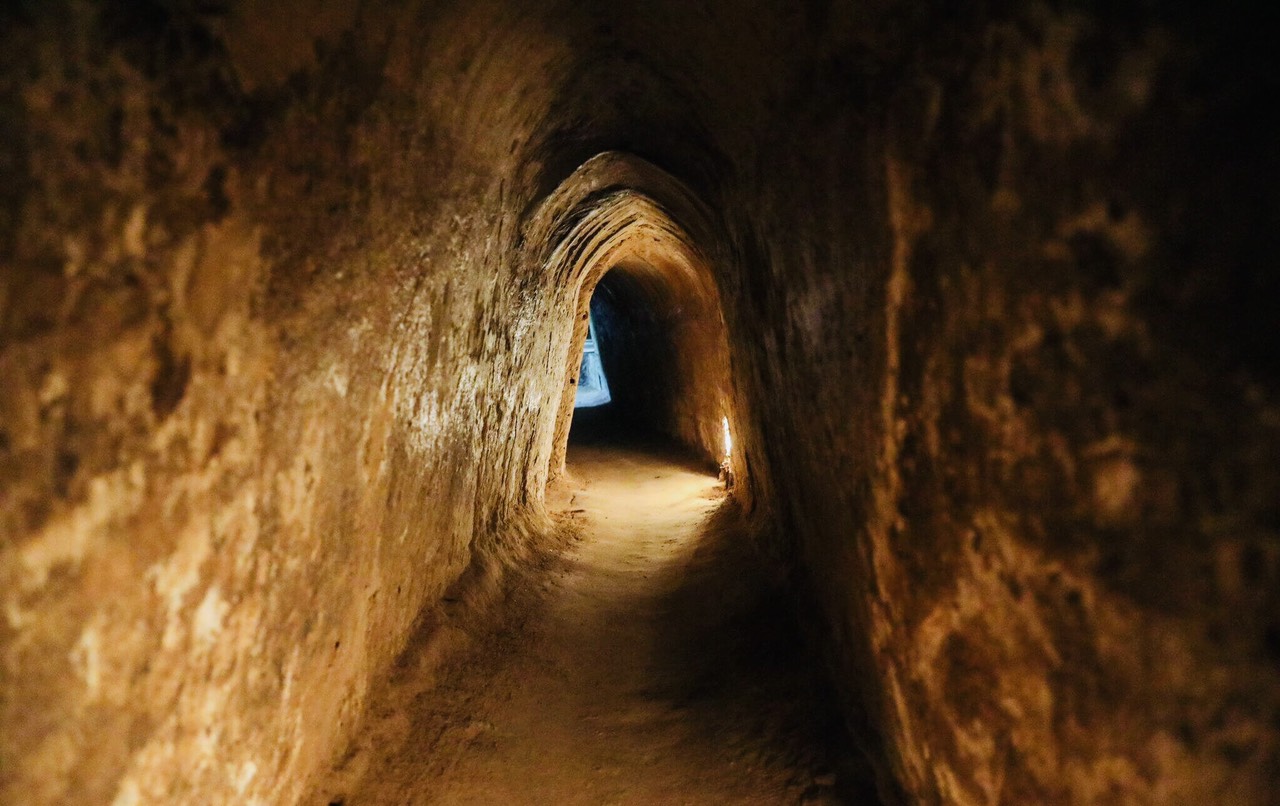
The origins of the Cu Chi Tunnel Vietnam can be traced back to the early 1940s when the Viet Minh, a resistance movement fighting for Vietnam’s independence from French colonial rule, began constructing a network of underground tunnels in the Cu Chi area. These tunnels were initially used as hiding places and storage facilities for weapons and supplies. However, as the French military intensified its operations, the tunnels were expanded and developed into a sophisticated underground network, serving as a hub for military operations and a sanctuary for the local population.
Resistance against the French:
During the First Indochina War (1946-1954), the Viet Minh used the tunnels to launch surprise attacks on the French forces and then quickly retreat to safety. The French, who were not familiar with the intricate tunnel system, found it challenging to combat the guerrilla tactics of the Viet Minh. The tunnels also provided a means of communication and transportation between different villages and bases, allowing the Viet Minh to coordinate their attacks effectively.
Expansion during the Vietnam War:
As the Vietnam War escalated in the 1960s, the tunnels were further expanded and reinforced by the Viet Cong, who were now fighting against the South Vietnamese government and its American allies. The tunnels became an essential part of the Viet Cong’s strategy, allowing them to move undetected and launch surprise attacks on the enemy. The extensive network of tunnels also served as a base for storing weapons, food, and medical supplies, providing the Viet Cong with a significant advantage over their opponents.
Construction of Cu Chi Tunnel Vietnam:
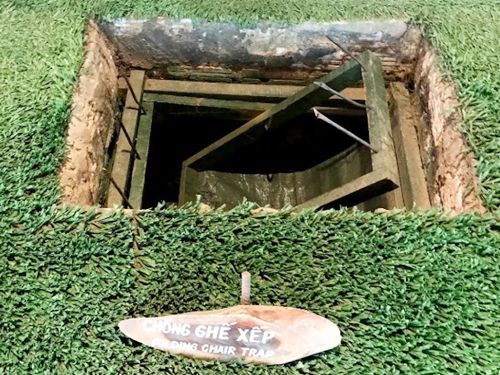
The construction of the Cu Chi Tunnel Vietnam was a remarkable feat of engineering and perseverance. The tunnels were dug by hand using simple tools such as shovels, hoes, and pickaxes. The soil removed from the tunnels was then used to create camouflaged trapdoors and ventilation shafts. The tunnels were strategically designed to be narrow and low, making it difficult for larger soldiers to navigate through them. They also had multiple levels, with some reaching depths of up to 30 feet.
Ingenious Design:
The design of the tunnels was ingenious, with various features that made them not only functional but also resilient against enemy attacks. One such feature was the use of booby traps, which were placed along the tunnel entrances to deter or injure any intruders. These traps ranged from simple spikes to more complex devices such as punji sticks, which were sharpened bamboo stakes covered in poison. Another feature was the use of air vents disguised as termite mounds, which provided much-needed ventilation for the underground dwellers.
Resourceful Materials:
Despite the limited resources available, the Viet Cong utilized whatever materials they could find to construct the tunnels. Bamboo, which was abundant in the area, was used to reinforce the walls and ceilings of the tunnels. The tunnels were also equipped with basic amenities such as kitchens, storage areas, and even makeshift hospitals. The resourcefulness and adaptability of the Vietnamese people were evident in the construction of these tunnels, showcasing their determination to defend their land at all costs.
Purpose of Cu Chi Tunnels:
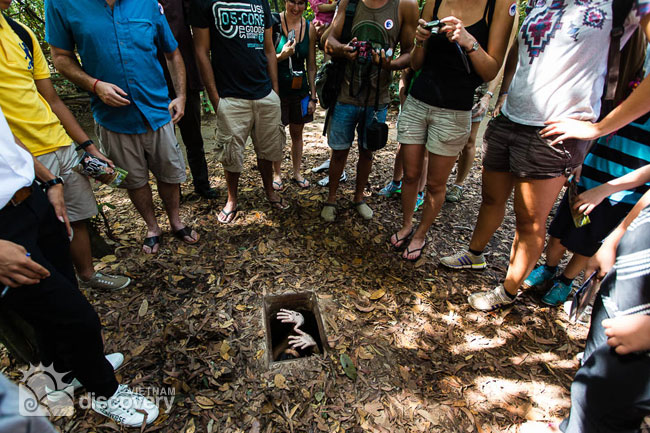
The Cu Chi Tunnel Vietnam served multiple purposes during the Vietnam War, making them an essential part of the Viet Cong’s strategy. Apart from providing shelter and supply routes, the tunnels also played a crucial role in gathering intelligence and launching surprise attacks on the enemy.
Gathering Intelligence:
The tunnels were used to gather information about the enemy’s movements and plans. The Viet Cong would send out scouts through the tunnels to observe and report back any valuable information. This allowed them to plan their attacks strategically and avoid being caught off guard by the enemy.
Launching Attacks:
The tunnels provided the Viet Cong with a means of launching surprise attacks on the enemy. They could quickly move through the tunnels and emerge at unexpected locations, catching the enemy off guard. The tunnels also allowed the Viet Cong to retreat to safety if the attack was unsuccessful, making it difficult for the enemy to retaliate.
Features of Cu Chi Tunnel Vietnam:

The Cu Chi Tunnels were not just a simple underground network; they were a complex system with various features that made them functional and resilient. These features were designed to serve specific purposes and played a vital role in the success of the tunnels.
Trapdoors:
As mentioned earlier, the tunnels had camouflaged trapdoors that were used to deter or injure intruders. These trapdoors were often covered with leaves or hidden under bushes, making them difficult to spot. Some trapdoors were also equipped with booby traps, making it even more challenging for the enemy to enter the tunnels.
Air Vents:
The air vents were disguised as termite mounds and provided much-needed ventilation for the underground dwellers. The tunnels were often cramped and stuffy, and without proper ventilation, it would have been impossible to survive for long periods. The air vents also helped to dissipate the smoke from cooking fires, preventing the enemy from detecting the tunnels’ location.
Underground Rooms:
The tunnels were not just a means of transportation; they were also used as living quarters. The Viet Cong built underground rooms that were used for various purposes, such as sleeping, cooking, and storage. These rooms were often small and cramped, but they provided shelter and protection from the constant bombing and shelling above ground.
Life in Cu Chi Tunnels:
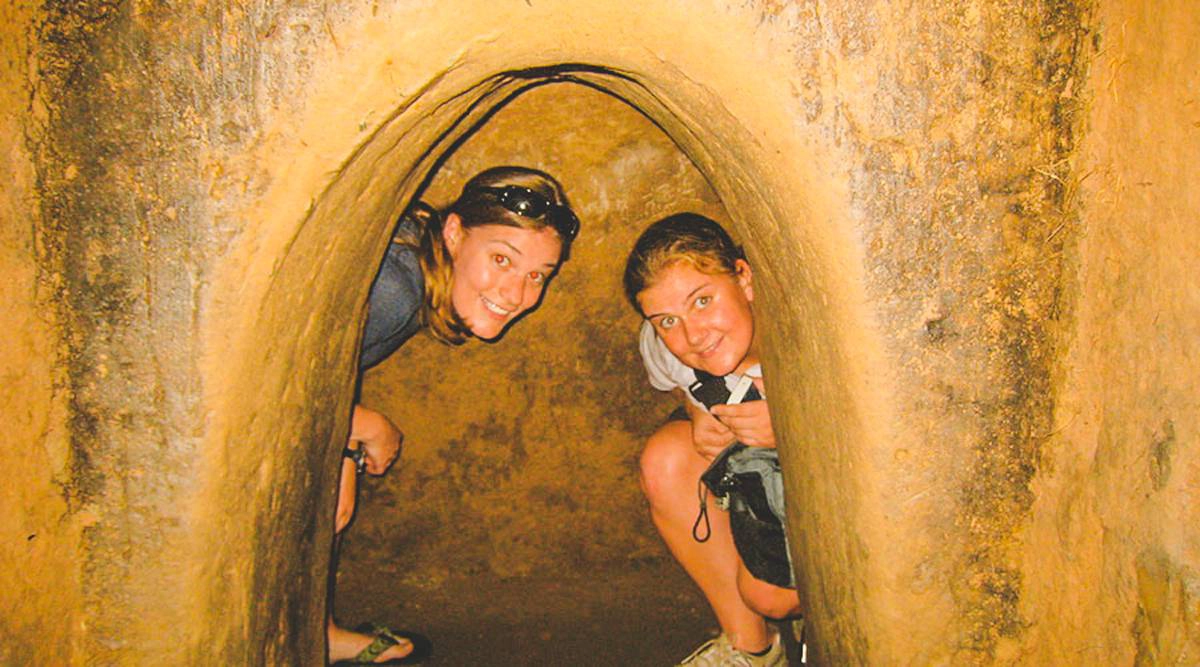
Life in the Cu Chi Tunnel Vietnam was not easy, but the Vietnamese people adapted to their surroundings and made the best of what they had. The tunnels were home to thousands of people, including soldiers, women, children, and the elderly. Despite the constant threat of danger, the people living in the tunnels managed to create a sense of community and camaraderie.
Difficult Living Conditions:
The living conditions in the tunnels were harsh, with limited space, poor ventilation, and a lack of basic amenities. The constant fear of being discovered or attacked by the enemy also took a toll on the mental and physical well-being of the people. However, the Vietnamese people showed incredible resilience and determination, adapting to their surroundings and finding ways to survive.
Daily Activities:
Despite the difficult living conditions, life in the tunnels went on, with people going about their daily activities. Women cooked meals using makeshift stoves, while children played games and went to school in the tunnels. The Viet Cong soldiers also spent their time training, gathering intelligence, and preparing for attacks.
Health Concerns:
Living in such close quarters also posed health risks for the people in the tunnels. Diseases such as malaria, dysentery, and respiratory infections were prevalent, and medical supplies were scarce. The Viet Cong soldiers often had to rely on traditional medicines and remedies to treat their illnesses.
Impact of Cu Chi Tunnels on Vietnam War:
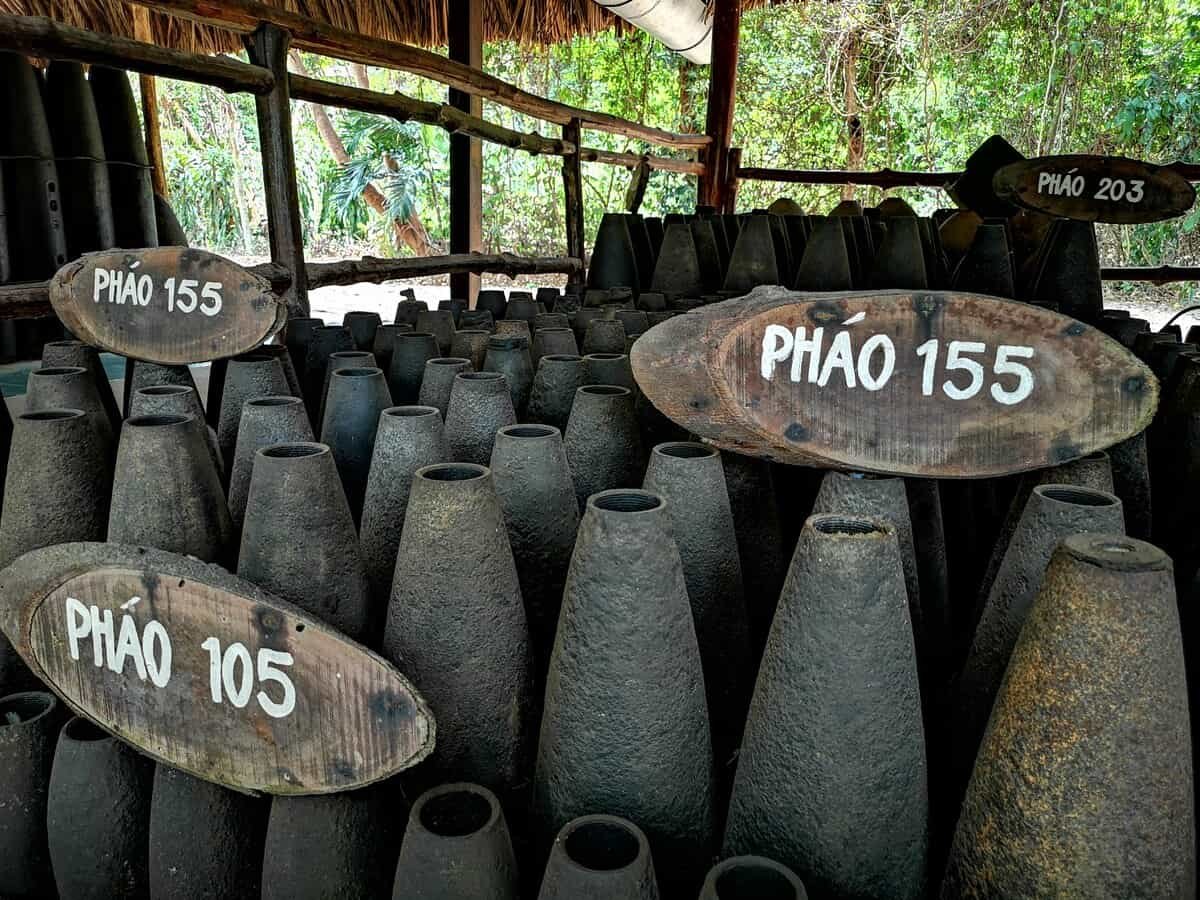
The Cu Chi Tunnel Vietnam played a significant role in shaping the outcome of the Vietnam War. The Viet Cong’s use of the tunnels gave them a significant advantage over their opponents and contributed to the American forces’ eventual withdrawal from Vietnam.
Strategic Advantage:
The tunnels provided the Viet Cong with a strategic advantage, allowing them to launch surprise attacks and evade the enemy’s superior firepower. The tunnels also served as a base for storing weapons and supplies, making it difficult for the enemy to cut off their supply routes.
Psychological Warfare:
The tunnels also had a psychological impact on the American soldiers, who were not used to fighting in such conditions. The constant fear of being attacked from underground took a toll on their mental well-being, contributing to the high levels of stress and anxiety among the troops.
American Response:
The American forces tried various tactics to combat the Viet Cong’s use of the tunnels, including bombing and flooding them. However, these tactics proved to be ineffective as the tunnels were well-constructed and could withstand the bombings. The American forces also suffered heavy casualties while trying to enter the tunnels, further highlighting the resilience and effectiveness of the tunnel system.
Tourism at Cu Chi Tunnels:
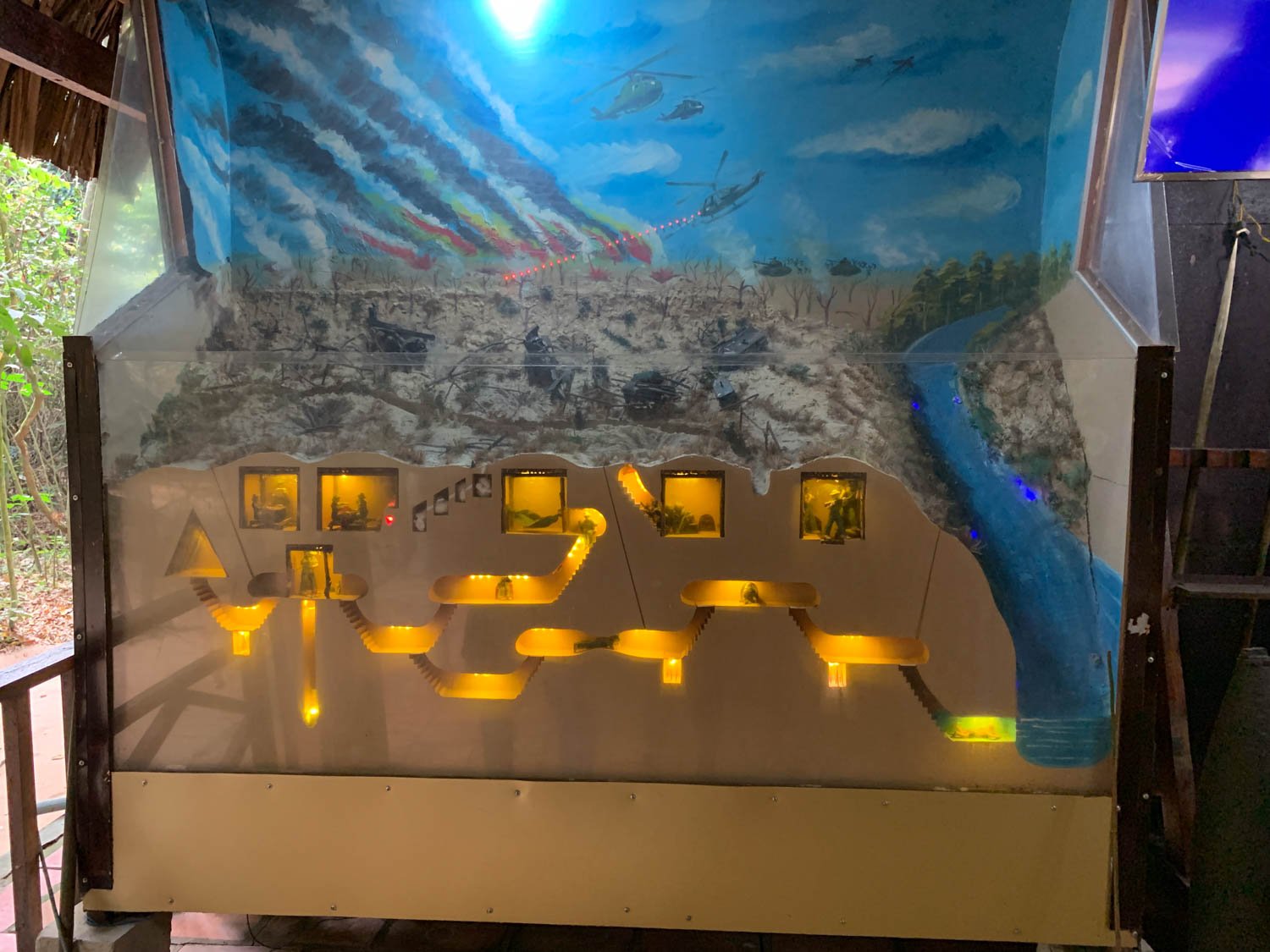
Today, the Cu Chi Tunnels have become a popular tourist destination, attracting thousands of visitors each year. The tunnels offer a unique opportunity to learn about the history of the Vietnam War and the resilience of the Vietnamese people.
Visitor Experience:
Visitors can explore a section of the tunnels that have been widened and reinforced for safety reasons. They can crawl through the narrow passageways, experience the darkness and cramped conditions, and see the various features of the tunnels up close. Visitors can also watch demonstrations of how the traps and booby traps were set up and used during the war.
Educational Value:
The Cu Chi Tunnels offer a valuable educational experience, providing insights into the history and culture of Vietnam. Visitors can learn about the Vietnamese people’s way of life during the war, their struggles, and their determination to defend their land. The tunnels also serve as a reminder of the atrocities of war and the importance of peace and reconciliation.
Visiting Cu Chi Tunnels Today:

If you are planning to visit the Cu Chi Tunnels, here are some essential things to keep in mind:
Getting There:
The Cu Chi Tunnels are located approximately 70 kilometers from Ho Chi Minh City (formerly known as Saigon). The easiest way to get there is by booking a tour or hiring a private car. It takes around 1-2 hours to reach the tunnels from the city, depending on traffic.
Entrance Fees:
There is an entrance fee to enter the Cu Chi Tunnels, which includes a guided tour and access to the tunnel system. The fees vary depending on the type of tour and the duration of the visit. You can also purchase souvenirs and refreshments at the site.
Dress Code:
As the tunnels are located in a tropical climate, it is advisable to wear light and comfortable clothing. However, if you plan to crawl through the tunnels, it is recommended to wear long pants and closed-toe shoes for protection. Also, remember to bring insect repellent and sunscreen.
Preservation of Cu Chi Tunnels:

The Cu Chi Tunnel Vietnam are not just a tourist attraction; they are also a significant part of Vietnam’s history and heritage. Efforts have been made to preserve the tunnels and protect them from natural elements and human interference.
Restoration:
Some sections of the tunnels have been restored and reinforced for safety reasons. This has been done without compromising the authenticity and historical significance of the tunnels. The restoration work has also provided employment opportunities for the local community.
Protection from Development:
There have been concerns about the impact of development on the Cu Chi Tunnels, with plans to build a highway that would cut through the area. However, efforts have been made to protect the tunnels from such development projects, and they have been designated as a National Historical Site by the Vietnamese government.
Controversies surrounding Cu Chi Tunnels:
Despite its historical significance, the Cu Chi Tunnels have also been a subject of controversy, with some questioning the authenticity and accuracy of the site’s portrayal.
Propaganda:
Some critics argue that the Cu Chi Tunnels have been turned into a propaganda tool, glorifying the Viet Cong’s actions during the war. They claim that the site’s presentation is one-sided and does not provide a balanced perspective on the war.
Safety Concerns:
There have also been concerns about the safety of visitors, especially those crawling through the narrow tunnels. Some critics claim that the tunnels have been widened and reinforced to cater to tourists, compromising their authenticity and historical accuracy.
Conclusion:
The Cu Chi Tunnel Vietnam are more than just a tourist attraction; they are a symbol of resilience, determination, and perseverance. They stand as a testament to the human spirit and the will to survive in the face of adversity. Visiting the Cu Chi Tunnels offers a unique opportunity to learn about the history of the Vietnam War and gain a deeper understanding of the Vietnamese people’s struggles and sacrifices. It is a journey through history and a reminder of the importance of peace and reconciliation.